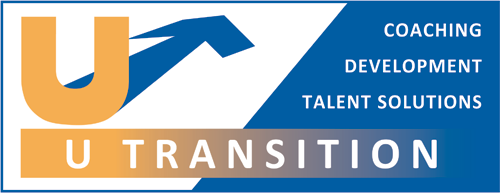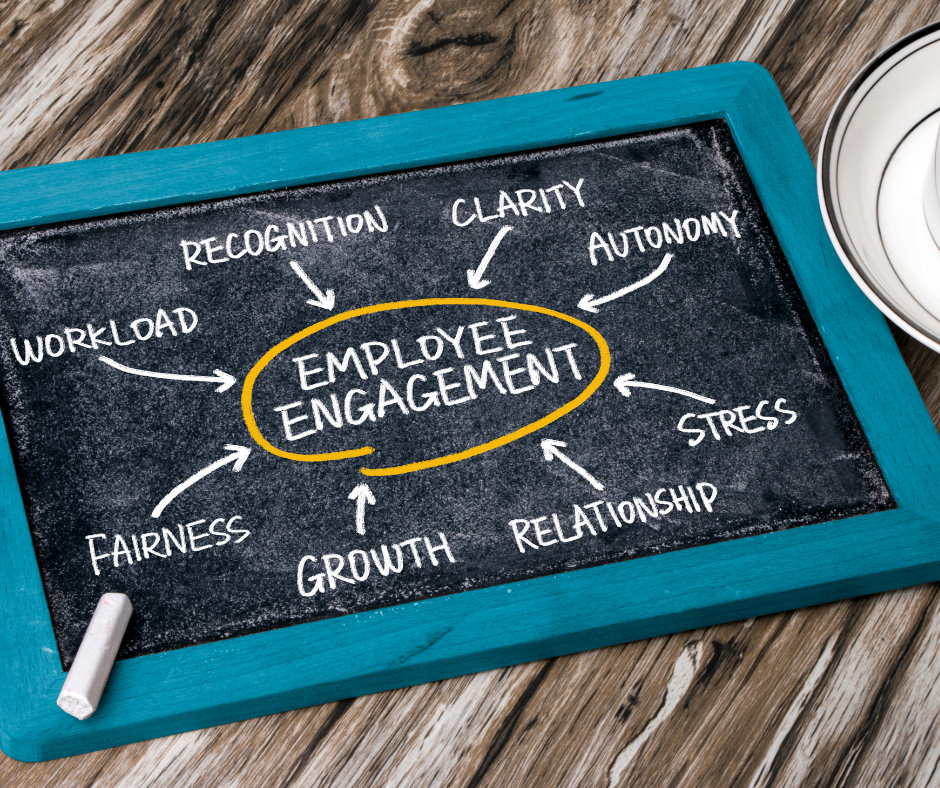
 What do we mean by engagement?
What do we mean by engagement?
Engagement is a concept that describes how employees feel towards the work they do, their colleagues / teams, and their business. So a feeling or psychological state which is based on their perceptions.
Engagement is not the same as happy! Happiness and satisfaction can come and go in the moment. You can be happy and satisfied but not engaged.
Engagement is about a long term, deep connection to a business.
It’s generally believed, and research shows, that engaged employees are invested in and care about their work, are committed to the business’ values and it’s performance and are driven by more than their pay packet, they want to make a difference ….and believe they can.
What does engagement look like?
There have been many times over my career when I have been totally engaged and committed .
When I think about the what was happening to enable me to feel engaged, the general themes for me looked like this….
- I understood the overall direction and goals of the business, was clear about what was expected of me in my role and day to day and knew how “my bit” fitted into and contributed to the wider team and business
- I felt part of something bigger
- I had access to information, was regularly informed and kept up to date with business performance both in my place of work and the wider business
- I received regular feedback, was challenged consistently to step put of my comfort zone, whilst equally being trained, developed and supported
- I felt valued and appreciated and my opinion was sought and, importantly, listened to
- I was paid fairly, in my opinion, and I had access to some great rewards and benefits
- I was motivated and driven and largely self directed
Remember a time when you were really engaged….
- what was going on at the time?
- how did it feel?
- how did you behave as a result?
5 Benefits of engaged employees
- Higher productivity – engaged employees are more productive than their disengaged colleagues and are more likely to work both more diligently and safely and provide more discretionary effort.
- Lower turnover – engaged employees understand the need for changes in business, they also feel recognised and supported and see opportunities for their progression and growth in the business.
- Lower sickness / absenteeism – when employees are engaged they show up.
- Advocates of the business – engaged employees speak positively about the business not only to their colleagues and family but to customers and job seekers. What better marketing is there?
- Business results – overall improved results will naturally follow.
Engagement is a two way responsibility?
From my personal list of engagement “stuff” above, the broad chunk themes are clear and regular communication, relationships, trust, commitment and structure.
Some of the things I listed were down to the business I worked for, some were down to me and some were a joint responsibility.
For me, communication is the most critical part of creating and maintaining employee engagement and especially two way communication and enabling meaningful dialogue.
Take development expectations for example.
My belief is that a business has a responsibility to provide training, learning and development (and more than that, it needs to if it is going be able to perform day to day and to stay ahead of its competitors) How will an employee know what training and development exists and is available to them within a business or what training and development is expected as part of their role if it’s never communicated, discussed and made public and if their line manager never has it front of mind?
Equally, how will a line manage know that an employee is frustrated about their lack of training opportunities or desires for career progression if they are never asked about them and never have the opportunity to express those aspirations?
Enabling dialogue will allow employees to feel heard and equally if the employee expectation is unrealistic, the line manager can then have honest conversations to manage those expectations more effectively.
How do you measure engagement?
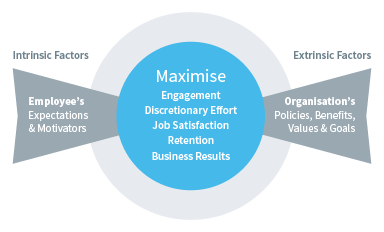
Many businesses will use an engagement survey with possibly pulse surveys, (smaller touch points) at regular intervals. These will often be anonymous and whilst this will offer some benefits and insights, it doesn’t allow important individual conversations to be had.
I’ve mentioned before that I use Harrison Assessments in my coaching and team development work.
Harrison is an amazing solution.
It’s starting point is a 25 minute online SmartQuestionnaire that measures 175 workplace traits, interests, preferences and other factors and enables the effective measurement of leadership paradoxes, emotional intelligence, personality, motivation, attitudes, passion for specific jobs, engagement, and retention. All at the same time.
This means when someone completes the 25min online questionnaire you have access to all of the above reports immediately. You can select and use specific reports or access all of them.
What is really powerful however, is that engagement expectations and the employee’s engagement fulfilment level is captured as part of the completion of the SmartQuestionnaire. This means the data and reports are all named. You are now able to proactively have valuable conversations with individuals about their engagement and what really matters to them and build a process of regular communication around it.
So, if you know someone’s expectations about development or renumeration or appreciation for example and how fulfilled that expectation is, it can inform better conversations with that individual and when running for teams, functions or at organisational level, inform your policies and strategies too.
Harrison measures 8 engagement metrics (as shown in dark blue on the diagram below).
- Development Expectations
- Renumeration Expectations
- Authority Expectations
- Social Expectations
- Appreciation Expectations
- Communication Expectations
- Personal Expectations
- Work Life Balance Expectations
It also highlights the behavioural traits required to deliver the expectation (light blue bar).
For example – “Wants development” requires a certain level of clarity and excitement towards your own goals coupled with a desire to self improve.
The percentage score to the right is the employee’s fulfilment score for the expectation highlighted in traffic light colours (red, amber, green)
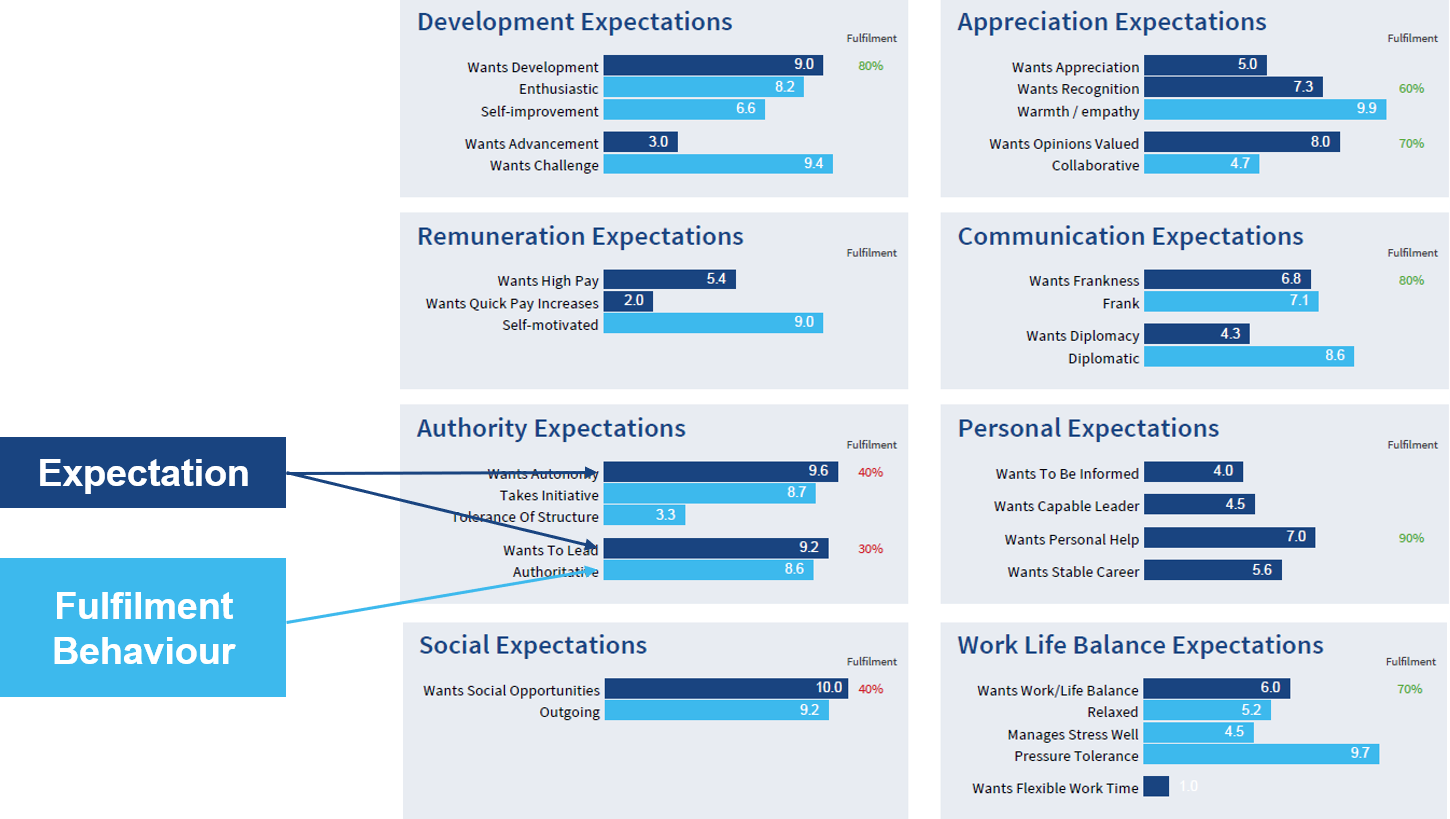
Reports are available at individual, team, function and organisation level and Harrison also has a pulse survey functionality.
This page from a sample group report shows the spread of engagement and fulfilment for “wants to lead” which can also be viewed in an interactive company dashboard.
A company dashboard allows you to see at a glance those employees that might be flight risks so you can appropriately prioritise conversations and highlights those core areas you might want to review further within the business including reviewing strategy and policies.
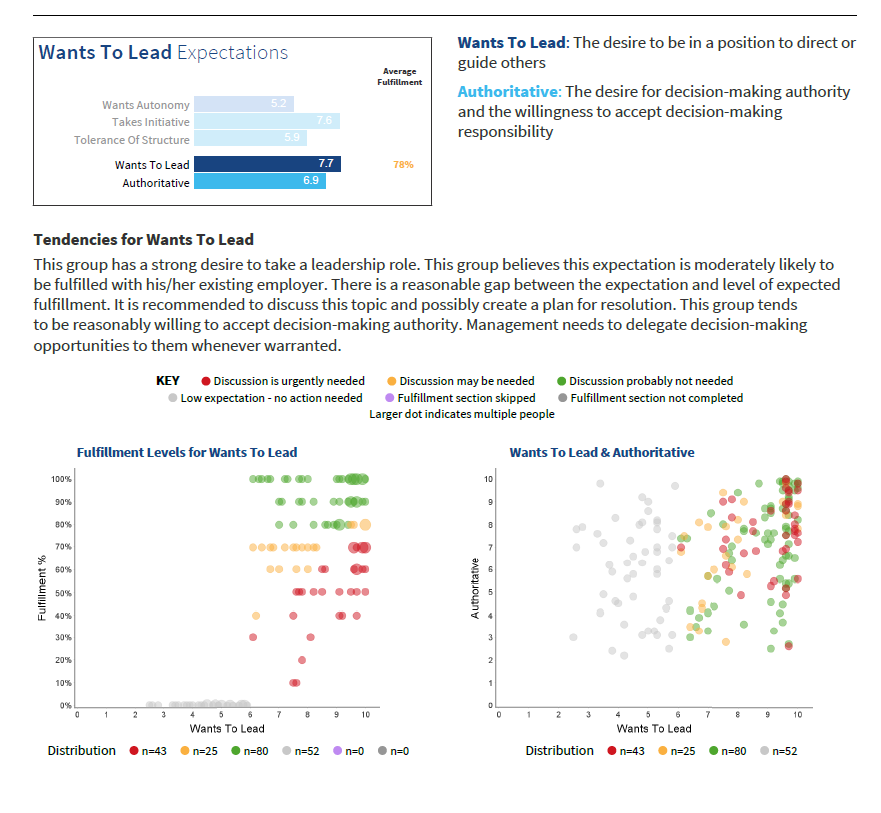
Because the SmartQuestionnaire captures more than engagement you also have access to a whole host of behavioural analytics at individual, team and business level that can be viewed through a dashboard and a series of reports if you choose to utilise them.
Watch Dan Harrison explain engagement here
However you measure employee engagement, you must keep your end goal in mind.
- What impact do you want the survey to have?
- Who will be accountable for following up on these results and how will it be done?
- Who will be acting on these results and what does that action look like?
- When will you measure it again?
Communication is key to engagement
Importantly, Engagement Surveys shouldn’t be the only tool in your toolbox for engaging and measuring employee engagement.
To understand engagement at the individual level and business level, you must utilise one-to-one meetings, giving and receiving feedback, recognition, reward, encourage listening groups, share information and expectations, review your policies and more.
- Complete your own Harrison Engagement report
- Demo the Engagement Dashboard
- Request sample reports
